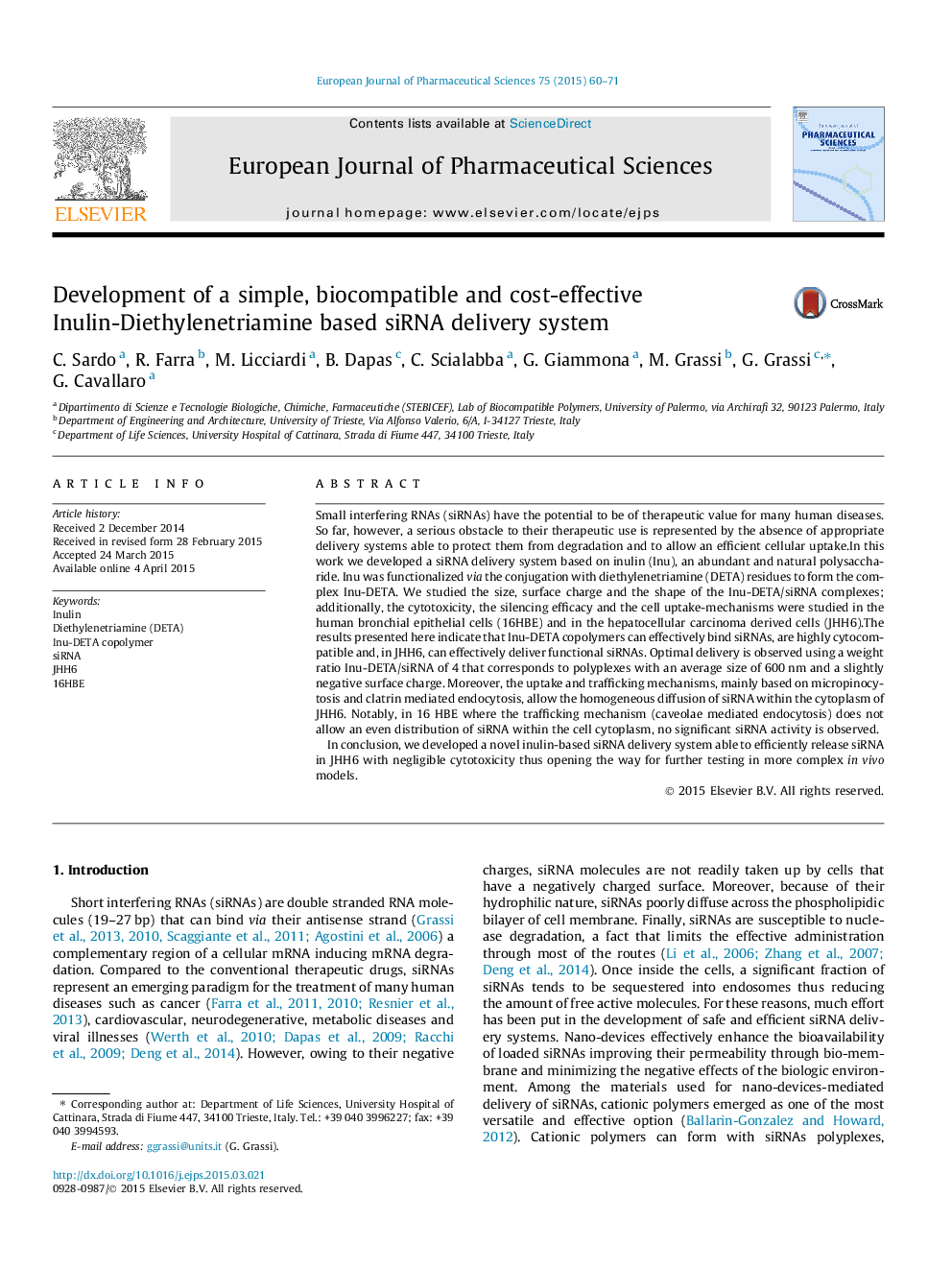| کد مقاله | کد نشریه | سال انتشار | مقاله انگلیسی | نسخه تمام متن |
|---|---|---|---|---|
| 2480238 | 1556175 | 2015 | 12 صفحه PDF | دانلود رایگان |

Small interfering RNAs (siRNAs) have the potential to be of therapeutic value for many human diseases. So far, however, a serious obstacle to their therapeutic use is represented by the absence of appropriate delivery systems able to protect them from degradation and to allow an efficient cellular uptake.In this work we developed a siRNA delivery system based on inulin (Inu), an abundant and natural polysaccharide. Inu was functionalized via the conjugation with diethylenetriamine (DETA) residues to form the complex Inu-DETA. We studied the size, surface charge and the shape of the Inu-DETA/siRNA complexes; additionally, the cytotoxicity, the silencing efficacy and the cell uptake-mechanisms were studied in the human bronchial epithelial cells (16HBE) and in the hepatocellular carcinoma derived cells (JHH6).The results presented here indicate that Inu-DETA copolymers can effectively bind siRNAs, are highly cytocompatible and, in JHH6, can effectively deliver functional siRNAs. Optimal delivery is observed using a weight ratio Inu-DETA/siRNA of 4 that corresponds to polyplexes with an average size of 600 nm and a slightly negative surface charge. Moreover, the uptake and trafficking mechanisms, mainly based on micropinocytosis and clatrin mediated endocytosis, allow the homogeneous diffusion of siRNA within the cytoplasm of JHH6. Notably, in 16 HBE where the trafficking mechanism (caveolae mediated endocytosis) does not allow an even distribution of siRNA within the cell cytoplasm, no significant siRNA activity is observed.In conclusion, we developed a novel inulin-based siRNA delivery system able to efficiently release siRNA in JHH6 with negligible cytotoxicity thus opening the way for further testing in more complex in vivo models.
Figure optionsDownload high-quality image (128 K)Download as PowerPoint slide
Journal: European Journal of Pharmaceutical Sciences - Volume 75, 30 July 2015, Pages 60–71